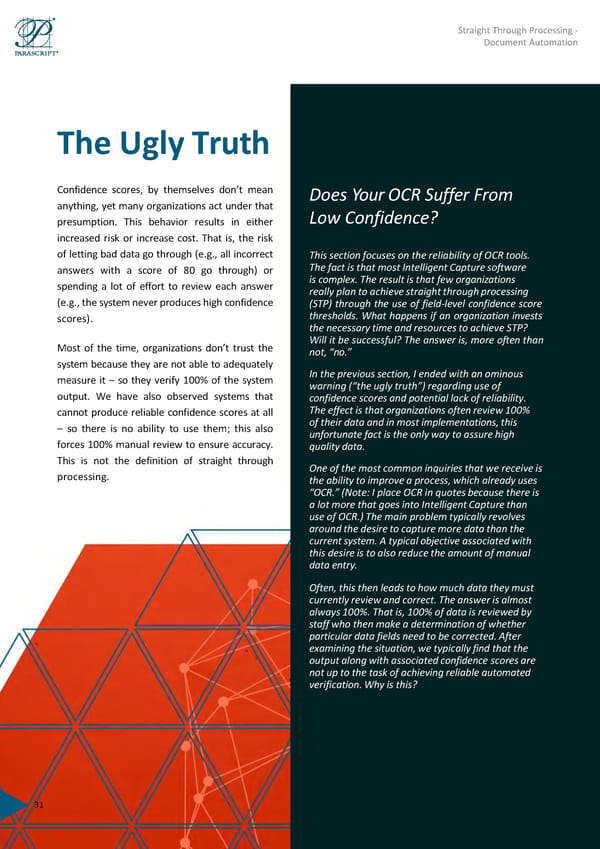Straight Through Processing - Document Automation The UglyTruth Confidence scores, by themselves don’t mean Does Your OCR Suffer From anything, yet many organizations act under that Low Confidence? presumption. This behavior results in either increased risk or increase cost. That is, the risk of letting bad data go through (e.g., all incorrect This section focuses on the reliability of OCR tools. answers with a score of 80 go through) or The fact is that most Intelligent Capture software spending a lot of effort to review each answer is complex. The result is that few organizations really plan to achieve straight throughprocessing (e.g., the systemneverproduceshighconfidence (STP) through the use of field-level confidence score scores). thresholds. What happens if an organization invests thenecessarytimeandresourcestoachieveSTP? Most of the time, organizations don’t trust the Will it be successful? The answer is, more often than not,“no.” system because they are not able to adequately In the previous section, I ended with an ominous measure it – so they verify 100% of the system warning (“the ugly truth”) regarding use of output. We have also observed systems that confidence scores and potential lack of reliability. cannot produce reliable confidence scores at all The effect is that organizations often review 100% – so there is no ability to use them; this also of their data and in most implementations, this forces 100% manual review to ensure accuracy. unfortunate fact is the only way to assure high qualitydata. This is not the definition of straight through One of the most common inquiries that we receiveis processing. the ability to improve a process, which alreadyuses “OCR.” (Note: I place OCR in quotes because there is a lot more that goes into Intelligent Capturethan use of OCR.) The main problem typicallyrevolves around the desire to capture more datathan the current system. A typical objective associated with this desire is to also reduce the amount of manual dataentry. Often, this then leads to how much data they must currently review and correct. The answer is almost always 100%. That is, 100% of data is reviewed by staff who then make a determination of whether particular data fields need to be corrected. After examining the situation, we typically find that the output along with associated confidence scores are not up to the task of achieving reliable automated verification. Why is this? 31
 Straight Through Processing for Document Automation Page 30 Page 32
Straight Through Processing for Document Automation Page 30 Page 32